The Benefits of Multiplayer, and How to Keep it in Scope
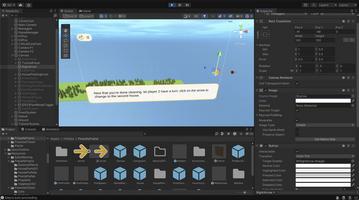
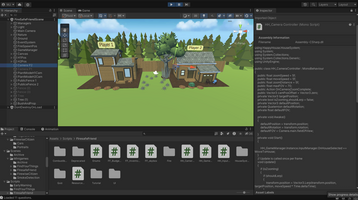
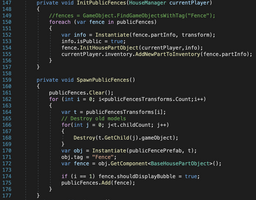
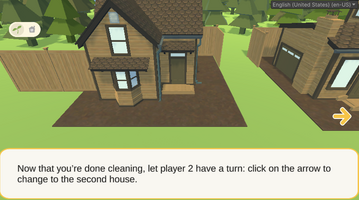
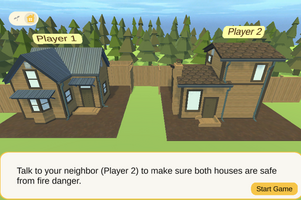
As mentioned in Multiplayer, Cooperation, and Discussion, we noticed early on during prototyping the players seemed more invested and more curious in the multiplayer experiences. Players also seemed to be learning more through their conversations. However, multiplayer experiences add one major development challenge: they tend to increase scope. Is creating the cooperative, discussion-focused experience worth the added effort and cost of network programming, hosting servers, and online match-making, plus the risk that not enough people join at any given time to allow seamless access to other players?
To avoid the risks and added complication while still gaining the benefits, we opted for a simplified multiplayer solution: single-device multiplayer in the form of split screen and pass-and-play. These options require no network programming and no servers, and only a modest design effort to provide interfaces that effectively integrate input from two or more players. On top of the technical benefits, this single-device approach seemed to really encourage the feeling of collaboration and closeness between players since it requires them to be sitting next to each other and actively considering the other person's actions alongside their own.
Implementation
To implement the pass-and-play approach with Firesafe Friends, we set up two camera views (one for each player) and added a simple arrow button to switch players (and tapping the button switches the camera view). During the tutorial the players must switch twice (from player one to player two and then back to player one) and are encouraged to talk to each other, as they are playing two neighbors.
Once in the main game, players can switch back and forth as many times as they want before choosing to "end the round" which progresses to either a neighborhood competition (where they can earn money) or a fire season (where the houses burn down to test their decisions). We keep track of each player's money and inventory separately, but there is some shared space between them where either player can spend on upgrades (such as a shared fence and a tree that overhangs both properties) which encourages them to strategize together.
Wildfire Minigames Collection
A collection of minigames to help people develop preparedness and resilience to wildfire
| Status | Released |
| Authors | Wildfire UCSC, Yiyang Lu |
| Genre | Simulation |
| Tags | minigames, wildfire |
More posts
- Finding Your Community9 hours ago
- Launching a Game for Impact: The Challenges without a Marketing Budget1 day ago
- Approaching User Experience: Crafting an Interactive and Immersive UI2 days ago
- Implementation: Simulating Dual-Lane Evacuation Traffic3 days ago
- Art Direction: Why We Chose a Stylized, Low-Poly Look for Our Wildfire Games4 days ago
- Tech Discussion: Simulating Fire That Feels Real4 days ago
- From Workshop to Production – Turning Community Stories into Playable Scenario...5 days ago
- Critical Interdisciplinarity6 days ago
- When Good Ideas Go—Iterating with Communities and Experts7 days ago

Leave a comment
Log in with itch.io to leave a comment.